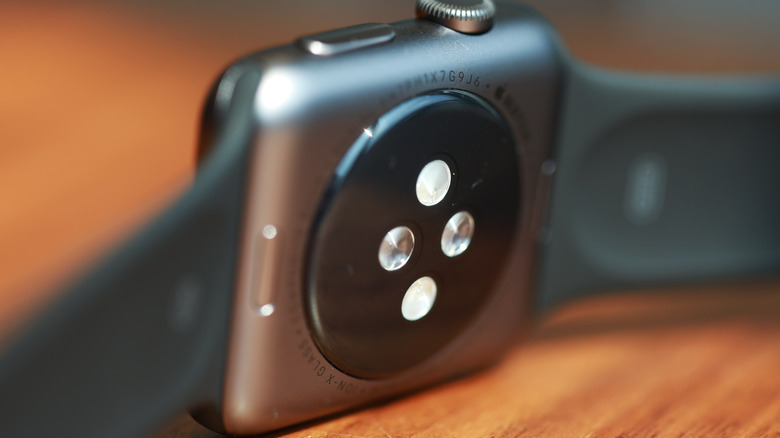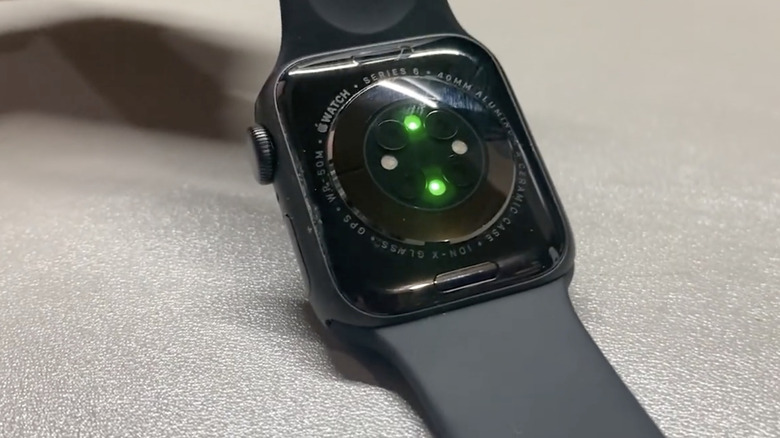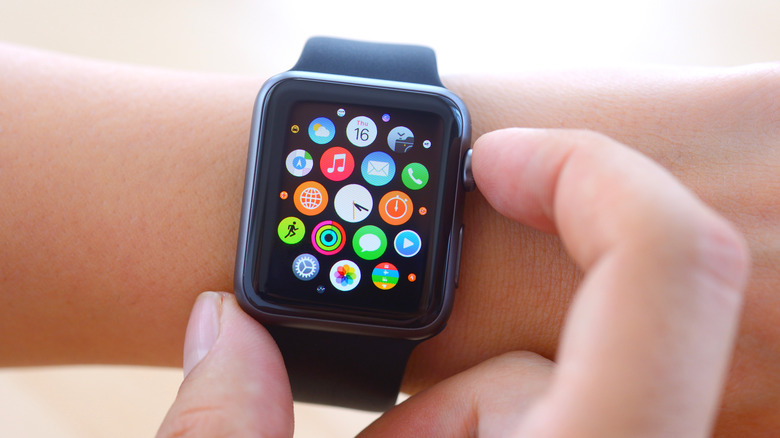What The Green Lights On Your Apple Watch Mean (And How To Turn Them Off)
From helping us plan our workouts to controlling our Apple TV, the Apple Watch has proven again and again that it's more than just a smartwatch. It's almost an extension of ourselves, accompanying us through every step of our day, from morning alarms to evening relaxation, adapting to our needs and habits. Many of us only take our watches off to charge them, just one example of how important they've become to our daily routines.
This wearable does so much that it's almost impossible to keep track of all its features. While the Apple Watch is popular, some things about it remain a mystery even to its most devoted users, with the green glowing LED lights on the back of the watch being chief among them.
These lights have left a question mark in the minds of many users, unsure of why Apple decided they needed to be exposed to a green glow on a regular basis. It turns out there's a good reason for those lights — they allow the watch's optical heart rate sensors to measure your heart rate.
Understanding the green lights
The technology behind those lights — known as "photoplethysmography" — is why you often see green on the back of your Apple Watch. While that word might seem intimidating, the principle behind it is quite simple: Since our blood is red, it reflects red light and absorbs green light.
When you strap the Apple Watch to your wrist, the green LEDs and light‑sensitive photodiodes monitor the volume of blood circulating through your wrist at a certain point in time. These lights flash hundreds of times per second, allowing the watch to calculate how many times your heart beats each minute.
So, when you see those lights flashing, you know your watch is hard at work keeping track of your heart rate. You won't always see the green LEDs illuminated on your watch because it doesn't constantly monitor your heart rate throughout the day. Instead, the watch monitors your heart rate continuously when you're working out, and for a brief period afterward, to determine your workout recovery rate. It does the same during Breathe app sessions.
Other than that, it also measures your heart rate periodically throughout the day while you're sitting still or walking. It uses this information to calculate your daily resting rate and walking average rate. All of this is designed to give you insights into your health, fitness, and general well-being.
Turning off the green lights
While there are a lot of benefits that come with monitoring your heart rate, there may be times when you want to turn them off. Perhaps they flash at unwanted times, like while you're sleeping, or you want to turn off the heart rate function to extend your watch's battery life. Whatever your reasoning, managing the green lights on your watch is quick and easy.
Follow these steps to turn off the green lights from your Apple Watch:
- Press the Digital Crown to open the Settings app.
- Tap on Privacy and Security.
- Scroll down and tap Health
- Toggle the heart rate button off.
Follow these steps to use your iPhone to turn off the green lights:
- Open the Watch app.
- Scroll down and tap "Privacy" in the My Watch tab.
- Toggle the heart rate button off.
Once you've turned off the green lights on your Apple Watch, your watch will no longer track your heart rate, which will affect the accuracy of health data like calorie burn and exercise intensity. It will also limit the functionality of certain features that rely on heart rate data, such as the Breathe app and workout recovery calculations.


